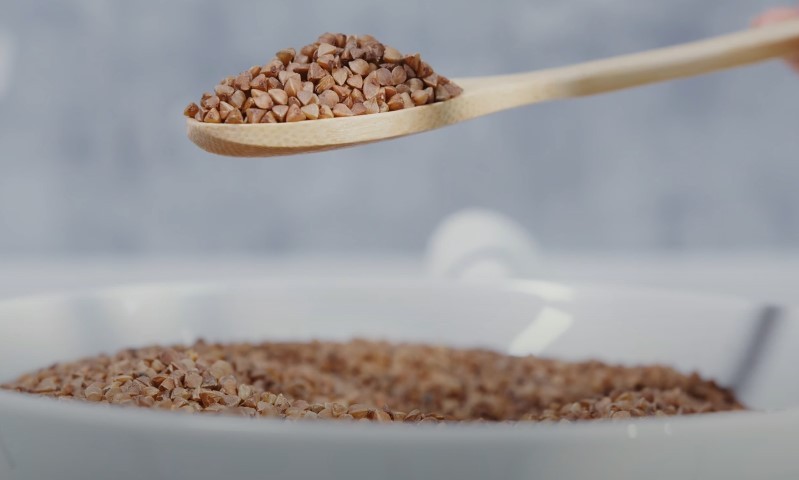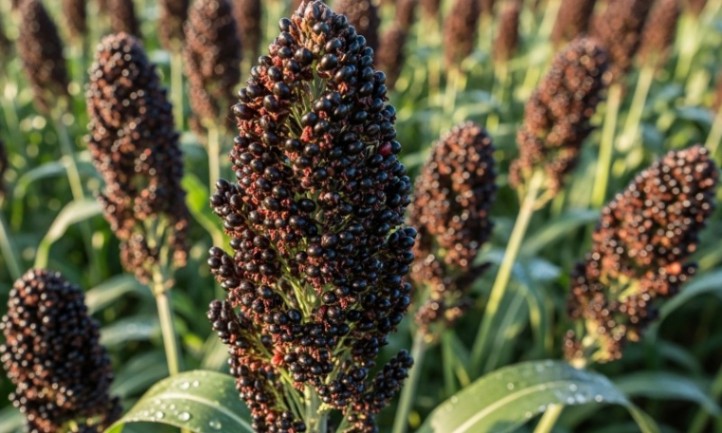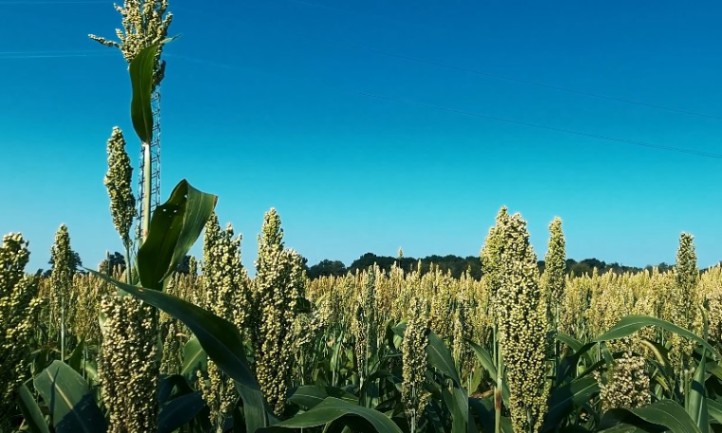Yes, Onyx Sorghum has legitimate health benefits; it’s packed with antioxidants, gluten-free, and has a slower glycemic impact than white rice or wheat. But the “superfood” label oversells it. It’s not a magic grain that will transform your health overnight. Think of it as a smart addition to a diverse, balanced diet , not a miracle food.
What Exactly Is Onyx Sorghum?
Onyx Sorghum didn’t sprout out of nowhere. It’s a selectively bred hybrid grain developed by researchers at Texas A&M University. The goal was to create a sorghum variety rich in anthocyanins and tannins, the same plant compounds that give blueberries and black rice their deep color and antioxidant strength.
This dark hue isn’t just for looks. It signals high levels of phytochemicals that can help combat oxidative stress , the same process linked to aging and chronic diseases. The grain has since been commercialized under the Grain Berry brand, which uses it in cereals, pancake mixes, and other foods.
In other words: Onyx Sorghum is a premium, antioxidant-heavy strain of regular sorghum , not a lab-engineered novelty, but not a centuries-old heritage grain either.
Nutrition Breakdown: What’s Inside
Here’s a side-by-side comparison of regular sorghum and Onyx Sorghum based on available data from research and product labels.
| Nutrient | Regular Sorghum (100 g dry) | Onyx Sorghum (estimated) | Why It Matters |
| Calories | 330 kcal | ~330 kcal | Both offer complex carbs for slow energy. |
| Protein | 10–11 g | 10–12 g | Comparable to quinoa; higher than rice. |
| Fiber | 7–8 g | 8–10 g | Helps regulate blood sugar and digestion. |
| Fat | 2–4 g | 3–4 g | Mostly unsaturated; heart-friendly. |
| Polyphenols (antioxidants) | Moderate | 10–20× higher (lab tests) | Supports antioxidant defenses. |
| Gluten | None | None | Safe for gluten-sensitive individuals. |
What makes Onyx Sorghum special is its dark pigment, which is loaded with polyphenols and tannins. These compounds can act as antioxidants and slow the breakdown of carbohydrates , meaning a steadier release of glucose into the bloodstream.
Why People Call It a “Superfood”

There’s some truth behind the buzz. Onyx Sorghum has a few standout qualities that make it genuinely healthier than refined grains.
1. High Antioxidant Content
That dark color isn’t just for show. The pigments come from anthocyanins, compounds that may help reduce inflammation and oxidative stress, factors involved in heart disease, cancer, and diabetes. In lab tests, Onyx Sorghum’s antioxidant potential was measured to be higher than many fruits.
2. Lower Glycemic Impact
Because of its tannins and resistant starch, Onyx Sorghum digests slowly. Studies have shown that sorghum-based foods cause smaller blood sugar spikes than wheat or rice-based options. This makes it appealing for people managing diabetes or weight.
3. Naturally Gluten-Free
Unlike wheat or barley, sorghum doesn’t contain gluten, making it a safe option for those with celiac disease or gluten intolerance.
4. Rich in Plant Nutrients
Besides antioxidants, Onyx Sorghum provides magnesium, phosphorus, iron, and B vitamins. It’s a versatile, whole-grain source of nutrients.
The Other Side: What You Don’t Hear in Ads

Of course, no superfood is perfect, and Onyx Sorghum has its caveats.
1. Tannins Can Block Minerals
The same tannins that make Onyx Sorghum a strong antioxidant can also bind to minerals like iron and zinc, reducing their absorption. That’s not a big deal if your diet is varied, but it matters for people at risk of anemia or mineral deficiency.
2. Limited Human Research
Most of the data supporting Onyx Sorghum’s benefits comes from general sorghum studies or lab tests. Human trials are still limited, so some of the claims rely more on theory than proof.
3. Marketing Exaggeration
Saying it has “20 times more antioxidants than blueberries” sounds impressive until you realize that the ORAC (lab antioxidant test) is no longer considered a reliable indicator of real health impact. The body doesn’t process antioxidants in the same way it does in a test tube.
4. Niche and Pricey
Onyx Sorghum products are usually branded and licensed, which means they can be more expensive and harder to find than standard whole grains.
How It Stacks Up Against Other Grains
| Grain | Glycemic Index | Antioxidant Level | Gluten-Free | Cost / Availability |
| White Rice | High | Low | Yes | Very common |
| Quinoa | Moderate | Medium | Yes | Common |
| Brown Rice | Moderate | Low | Yes | Common |
| Oats | Moderate | Medium | Cross-contamination risk | Common |
| Onyx Sorghum | Low | Very High | Yes | Niche / Higher cost |
As the table shows, Onyx Sorghum beats most grains on antioxidant potential and glycemic control, but it lags in accessibility and affordability.
How to Use It in Everyday Cooking
View this post on Instagram
You can cook Onyx Sorghum much like quinoa or rice; it just takes a little longer.
- Soak overnight to reduce tannins and improve texture.
- Simmer 1 cup of grain with 3 cups of water for about 45 minutes.
- Use it in:
- Grain bowls with roasted veggies
- Breakfast porridge with fruit and nuts
- Stuffed peppers or casseroles
- Homemade energy bars or granola
Pair it with citrus or colorful veggies to boost iron absorption and keep the meal nutrient-balanced.
The Verdict: Underhyped Science, Overhyped Marketing
So, is Onyx Sorghum really a superfood?
Yes, but only in context.
But it’s not going to replace fruits, veggies, or a balanced diet. The term superfood might sell cereal boxes, but the real value of Onyx Sorghum is in its subtle, long-term support for metabolic and heart health.
Think of it this way:
If quinoa is the old favorite of the health-conscious, Onyx Sorghum is its darker, quieter cousin, nutrient-dense, versatile, and worth trying, just without the cape and superhero claims.
Bottom line
Onyx Sorghum isn’t snake oil, but it isn’t sorcery either. It’s a genuinely nutritious grain that deserves more attention, just not blind devotion. Eat it for variety, flavor, and health balance, not because it claims to be the next miracle superfood.

